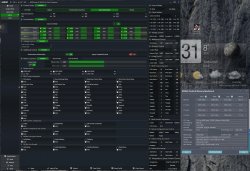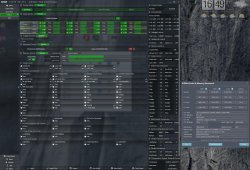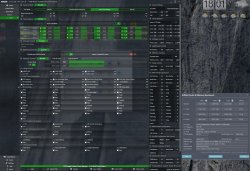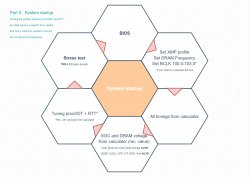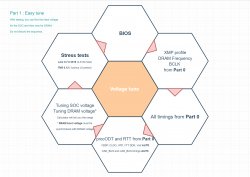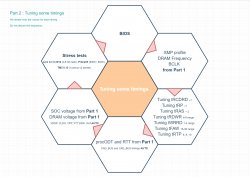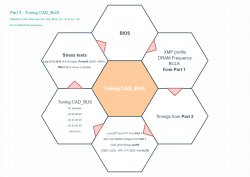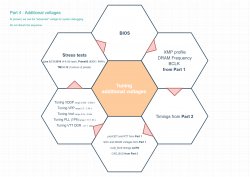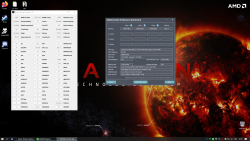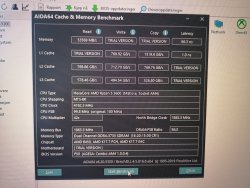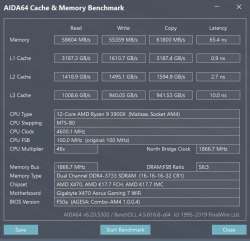Thanks for your feedback as always, Gentlemen. A couple of questions ...
1) When you "boost" is that only the PBO and Auto Overclocking options in UEFI, or are there other settings to adjust? There is an SOC setting under CPU, and another stand alone SOC on the ASRock Tweaker set of values. I stopped using the Advanced/AMD Overclocking set of DRAM values, because I suspect ASRock has tied some memory training demonry into their settings at boot;
2) I am using TPU's own MemTest64 to test for memory errors, along with the version included in the Ryzen DRAM Calc. After a half hour on MemTest64 it has completed 22 loops through the memory with no errors. Why the continuous looping? It's already gone through the available memory pool 22 times, wouldn't a physically bad RAM have failed at one? Is it a matter of fatigue, or heat build-up, or just trying to establish real-world use with the memory testing?;
2a) What is your opinion of the Karhu memory test out of Finland? I heard it is *very* fast at showing memory errors.
My testing at ECO is because my primary use on the machine is crunching BOINC numbers 24x7 and it gives a 30C degree drop in temperatures 100% cores 100% cycles. Once I wring all I can at this level of power, I will juice it back to 105W and see what else I can get.
Really ... how do I "boost" as you are telling me?
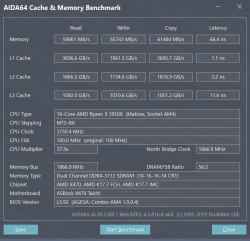
That latency is way too high.
100% stable Ryzen 1600AF with Hynix RAM <65ns
I am running 4x8Gb on 3950X.
Check the throughputs on Aida64
Ryzen plus doesn't really apply here it scales differently with memory with a good kit you can get into the mid 50ns range
oxrufiioxo ... it intrigues me your R/W and Copy numbers are reversed from mine.
Makes me wonder if I can learn which memory readings are involved in those actions and tackle the timings that way.
Your latency is impressive, I don't see how you can run 4000 at 1:1 and notice there is no North Bridge frequency in your Aida64 screenshot.
Are you running 1:2 at C2T? How many banks of DRAM and what brand? What DRAM voltage does it take to get there?
Lorry, Zach ... never mind my boost question above, I've found your thread on trying to understand Ryzen boost.





